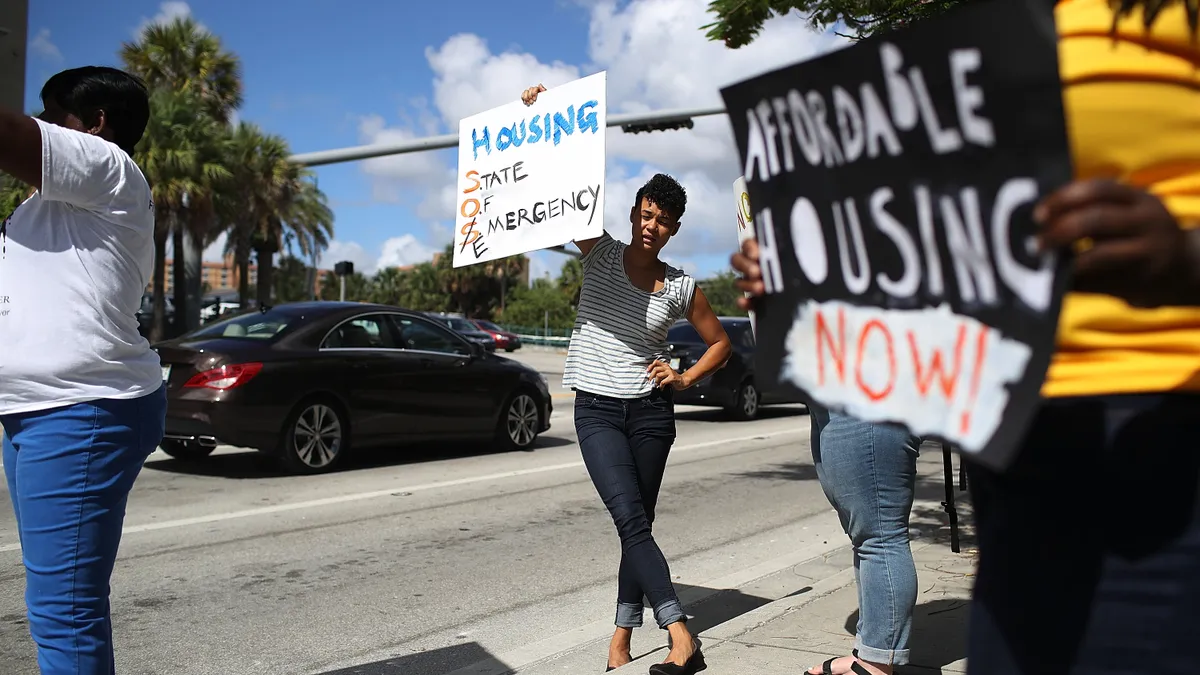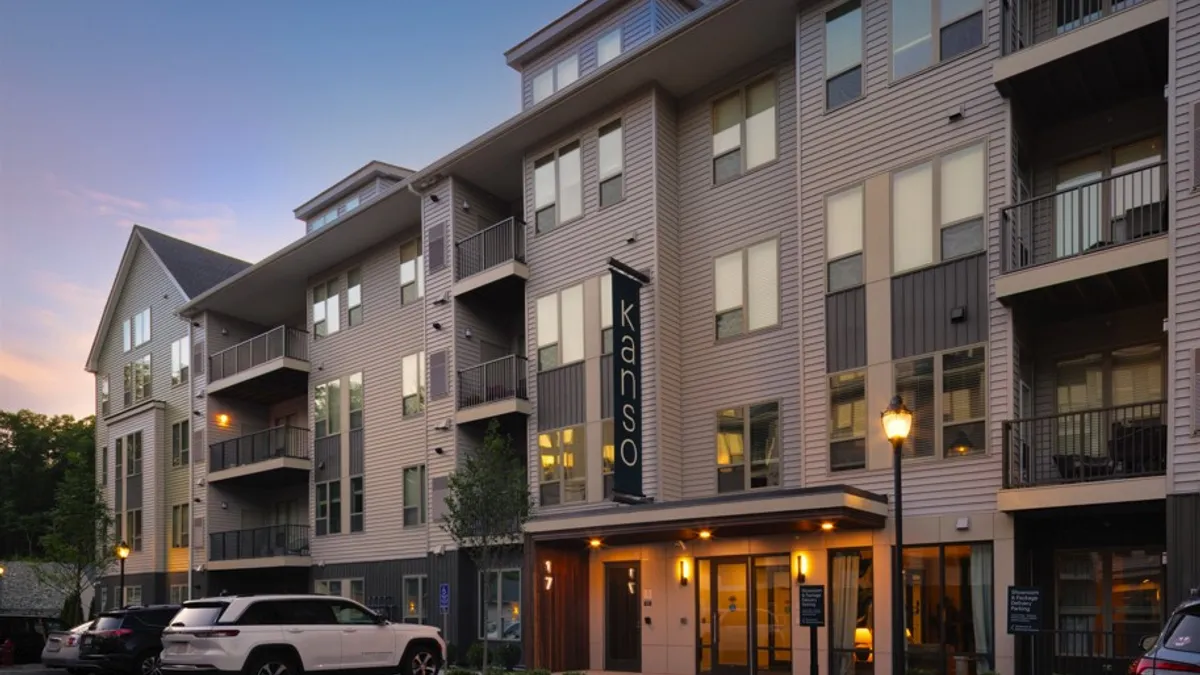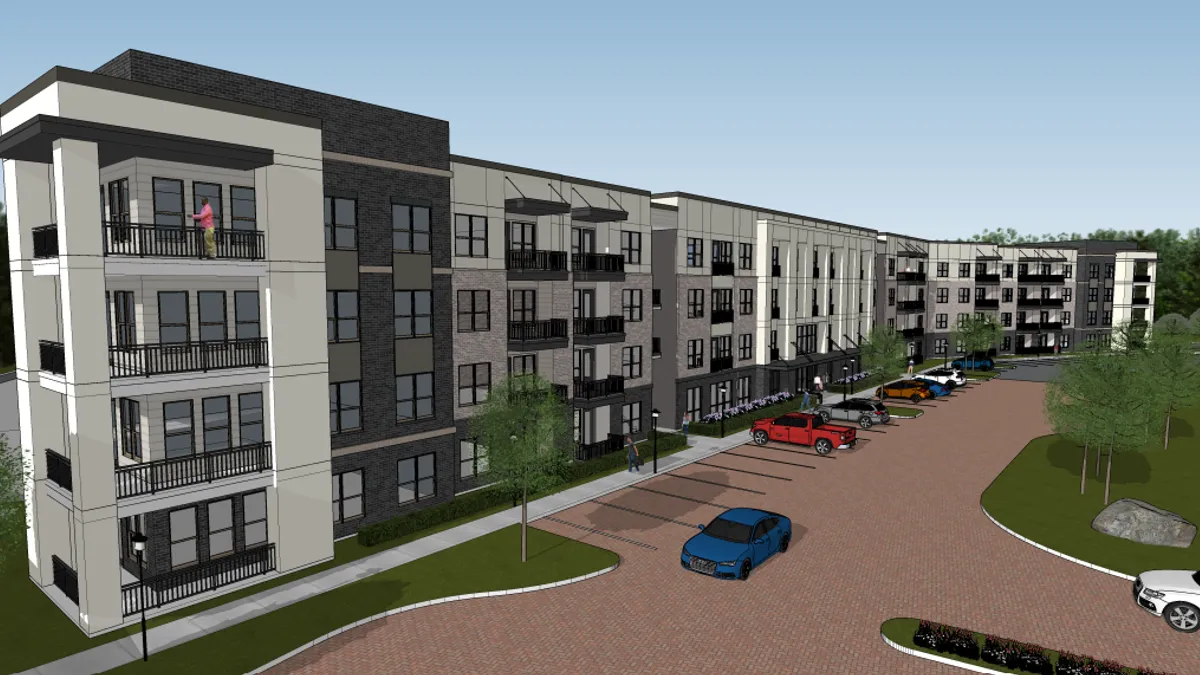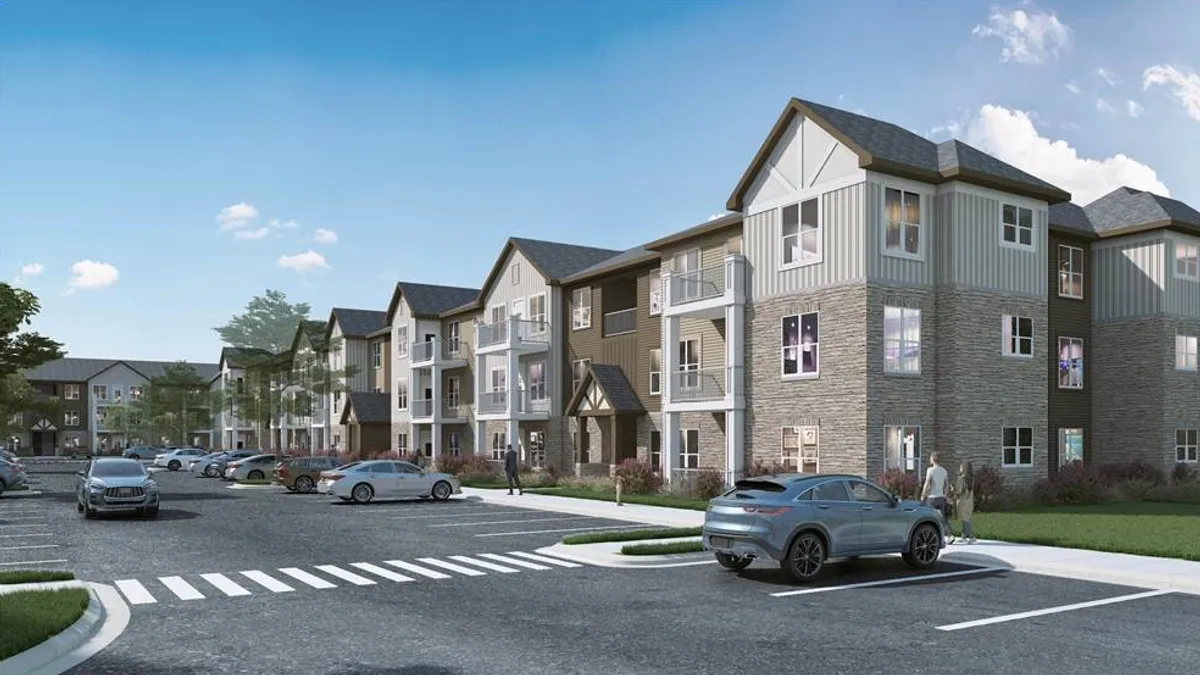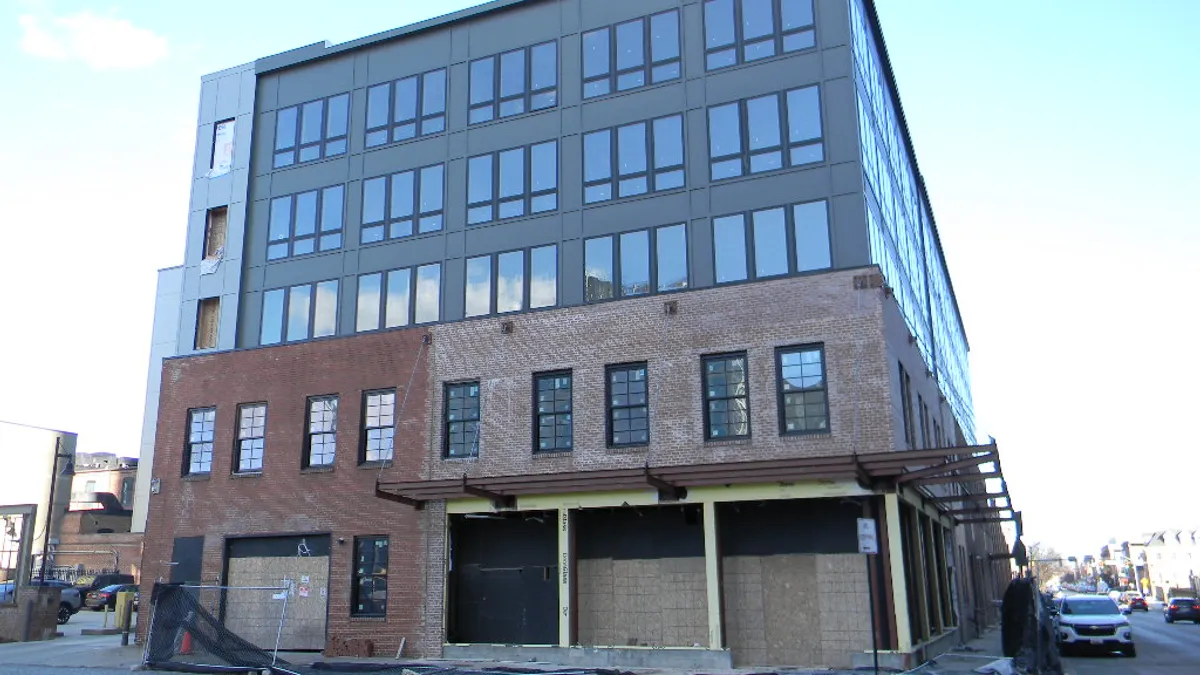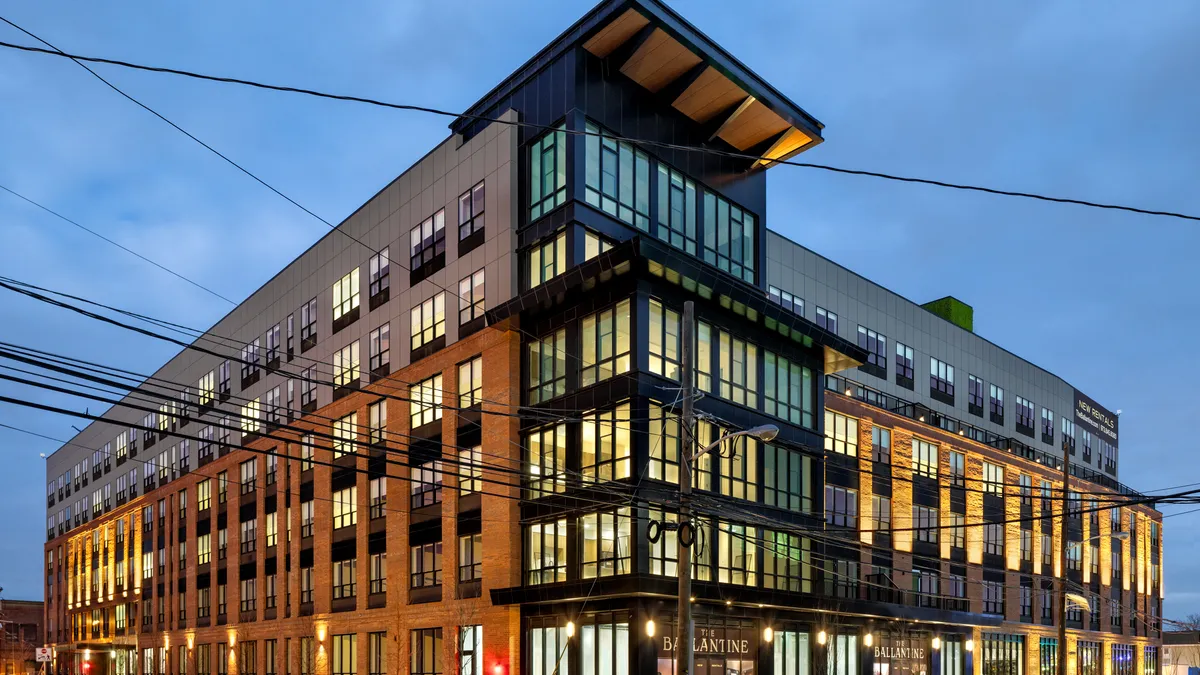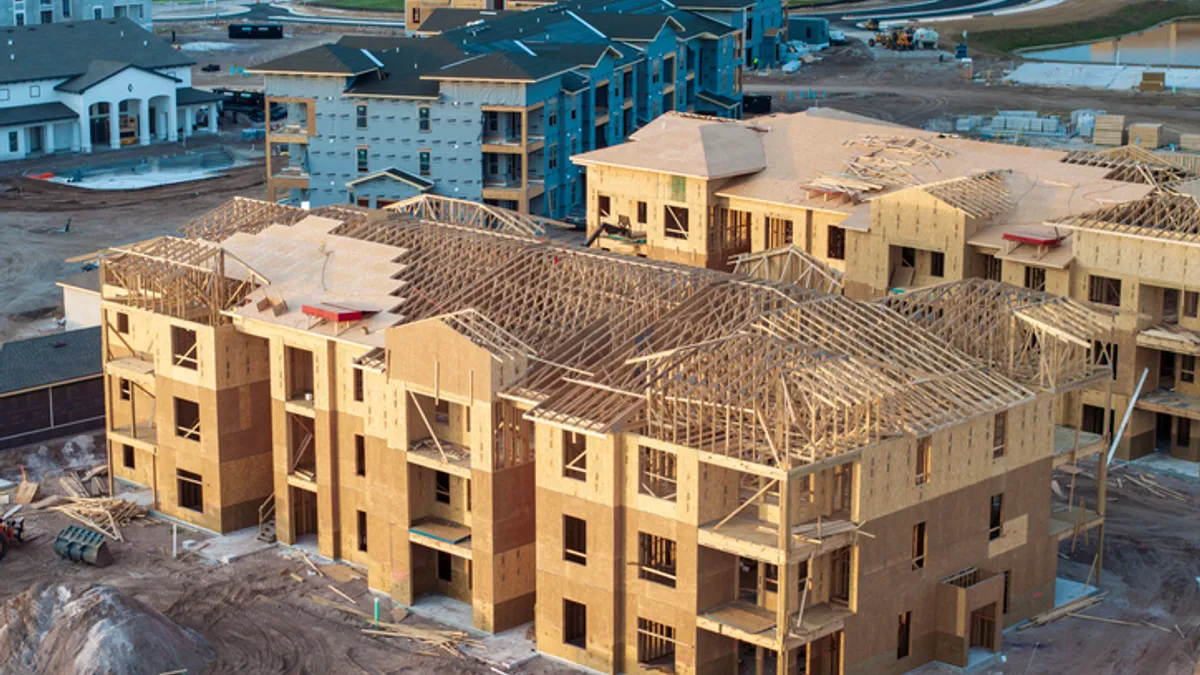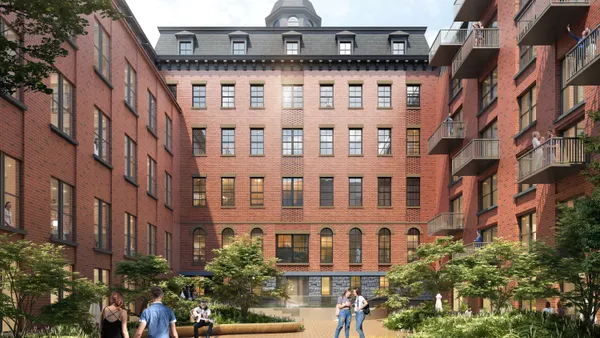This article is the second in a series looking at how a push for greater density in cities across the country is affecting the multifamily sector. Click here for the first article.
The United States could fulfill its housing crunch by building 328,000 apartments every year until 2030, according to National Multifamily Housing Council and National Apartment Association research. High-density multifamily housing could help ease the current crisis.
But as nearly every multifamily developer is well aware, it’s illegal to build anything other than detached single-family homes on 75% of residential land in many American cities.
“The apartment industry currently faces significant barriers to new apartment construction development and renovation,” NMHC and NAA said in a joint statement.
That’s an understatement, according to Matthew Lewis, communications director for the grassroots advocacy group California YIMBY, which has more than 80,000 members and 20 local teams of volunteers working to ensure all Californians have a home.
“We have set up a regime where you can build as many single-unit houses as you want, but if you want to build more than one unit, you have to go through a Rube Goldberg machine and process to maybe get permission or maybe spend seven years wasting your money and ending up with nothing,” Lewis said.
It hasn’t always been this way.
It all started when the California state legislature passed the City Planning Enabling Act in 1916, giving cities the power to zone their own land.
Berkeley, California, promptly became the first city to pass an ordinance codifying single-family zoning, University of Georgia College of Environment + Design dean Sonia Hirt writes in “Zoned in the USA: The Origins and Implications of American Land-Use Regulation.”
Ten years later, the U.S. Supreme Court decided, in the landmark case Village of Euclid v. Ambler Realty Co. (1926), that municipalities and local governments should be allowed broad discretion to impose zoning ordinances, stating that apartment buildings destroy “the residential character of the neighborhood and its desirability as a place of detached residences.”
By 1930, 75% of states had adopted zoning legislation.
As housing finance expanded under the New Deal in the 1930s, the federal government “often required low-density, racially segregated zoning as a condition for federal support,” according to the book ”Informing Public Policy: Analyzing Contemporary US and International Policy through the Lens of Market Process Economics” edited by Stefanie Haeffelle, Abigail R. Hall and Adam Millsap.
For nearly a century, cities in the United States have continued to create and enforce zoning that excludes people from neighborhoods based on race and income, “but this is no longer the world we want to live in,” Hirt told Multifamily Dive. “And that’s what YIMBY is.”
Local issues
The Yes, In My Backyard movement was born in California’s Bay Area, which Portland, Oregon-based transportation and housing advocate Aaron Brown calls “the epicenter of disastrous zoning and policies and housing affordability.”
Brown — in collaboration with the Sightline Institute and Portland: Neighbors Welcome — organized and co-hosted the fourth YIMBYtown conference, often referred to as “the Woodstock for housing advocates,” in Portland in April. (Launched in 2016, YIMBYtown took a three-year hiatus during the pandemic.)
YIMBY emerged as a movement, Brown said, because “there was an overall recognition that NIMBYs were showing up at community meetings and stopping people from building anything.”
In 2017, the unwitting face of entitled NIMBYs everywhere — a woman who stood up and waved a zucchini at a Berkeley City Council meeting, complaining a proposed housing development would block sunlight to her garden and prevent her from growing any more — lit a fire under the nascent YIMBY movement.
“At the end of the day,” Brown said, “whether you see this as a market-driven thing or a housing justice thing, the notion that homeowners should be able to veto housing growth and develop massive wealth out of the scarcity of housing supply is a normative assumption in American politics and the economy that we’re trying to dismantle.”
As diverse as the neighborhoods they promote, YIMBY groups vary widely from town to town and state to state, with no overriding manifesto.
“Zoning issues are very local,” said Ileana Shinder, a Takoma Park, Maryland-based architect and author. “The same YIMBY group in San Jose, California, probably has a very different profile than one in Takoma Park, Maryland. It’s not like a religious or political group—it’s very heterogenous.”
“There’s no one consistent ideology of YIMBY,” agreed Karin Brandt, an urban planner who is the CEO and founder of coUrbanize, a community-engagement platform that helps developers solicit community feedback on proposed projects across the United States and Canada. “But overall, it’s really exciting to see people signing up for change, because right now the status quo is keeping so many people out of housing.”
Jeff Head, the vice president of development for Chicago-based The Habitat Co. appreciates YIMBYs’ advocacy for his projects but also applauds their message that all housing creation is a public good.
“That’s not a discussion that was very active 10 years ago,” he said.
Click here to sign up to receive multifamily and apartment news like this article in your inbox every weekday.


